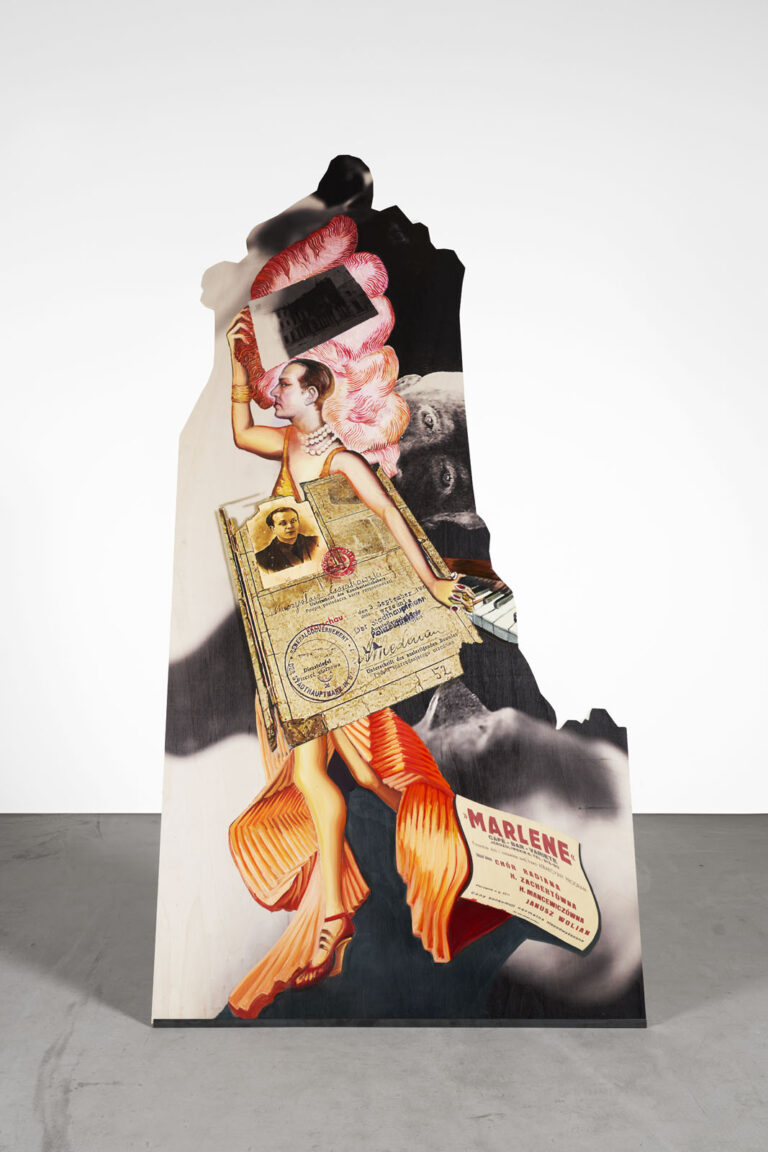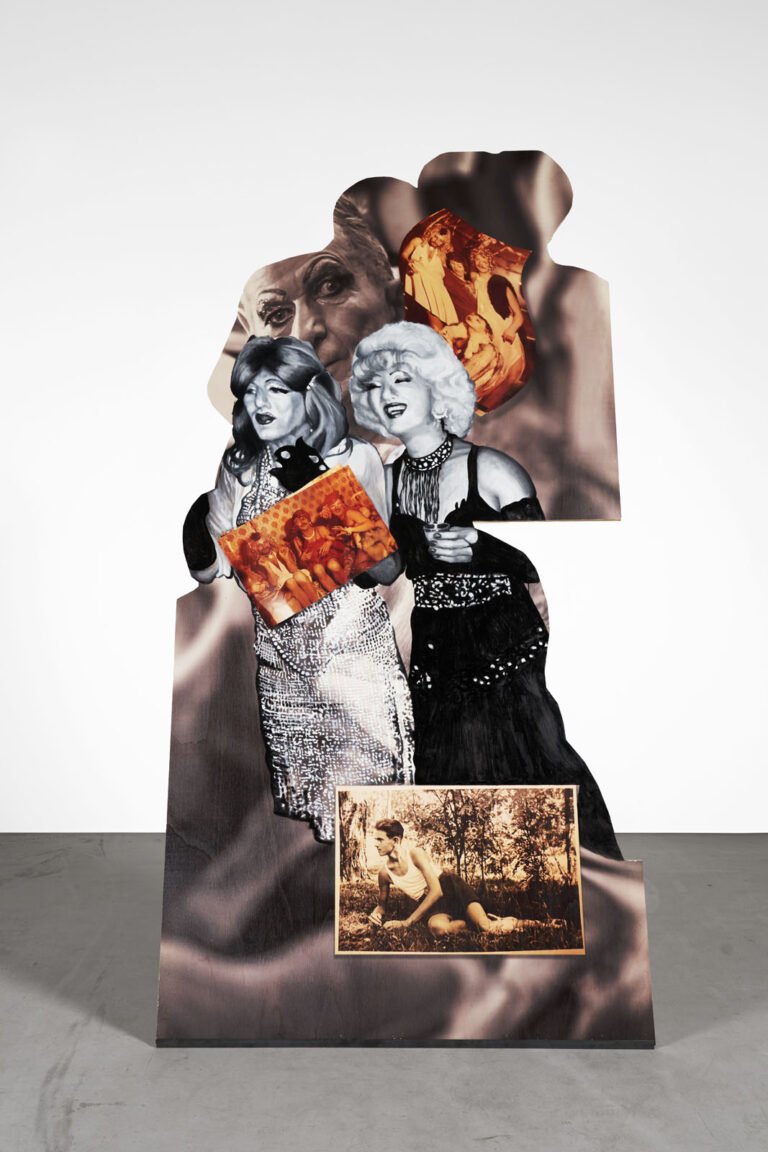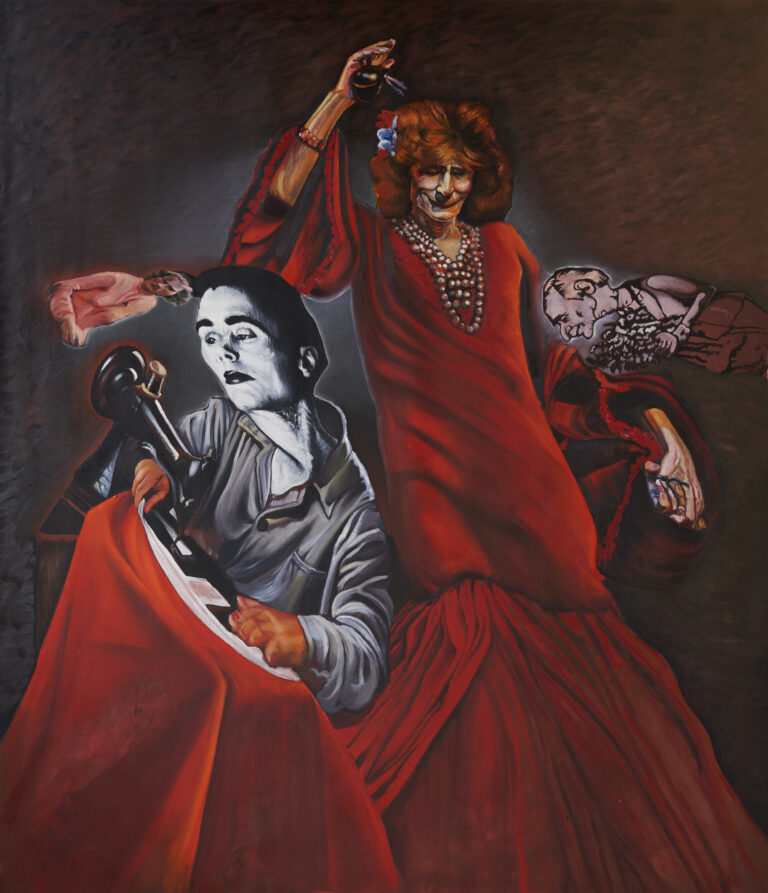Published 28 AUG 2024
Mikołaj Sobczak
Le Boudoir de L‘Amour
Opening – 11 SEP 2024, 2:30-8 pm
11 SEP until 19 OCT 2024
15 SEP 2024, 2:30 pm – Artist Talk with historians Joanna Ostrowska and Suzette Robichon

Mikołaj Sobczak
Alex, 2024 In collaboration with Tom Alon Oil, print on wood, disassembled metal stand, 250 x 122 cm / 98.4 x 48 inches
© Mikołaj Sobczak. Courtesy the artist, Jester | Flanders Arts Institute, and Capitain Petzel, Berlin. Ph: GRAYSC

Mikołaj Sobczak
Lulla la Polaca, 2024 Oil, print on wood, disassembled metal stand, 250 x 122 cm / 98.4 x 48 inches
© Mikołaj Sobczak. Courtesy the artist, Jester | Flanders Arts Institute, and Capitain Petzel, Berlin. Ph: GRAYSC

Mikołaj Sobczak
Dress From A Flag, 2023 Signed, dated and titled verso, Oil on canvas 200 x 167 cm / 78.7 x 65.7 inches
© Mikołaj Sobczak. Courtesy the artist, Jester | Flanders Arts Institute, and Capitain Petzel, Berlin. Ph: GRAYSC
Capitain Petzel is pleased to announce Mikołaj Sobczak’s first solo exhibition with the gallery, opening as part of Berlin Art Week on September 11, 2024.
Mikołaj Sobczak’s work focuses on the creation of alternative historical images, blending video and painting with performance, often in collaboration with German artist Nicholas Grafia. Sobczak’s surreal, collaged narratives feature protagonists from queer and transgender activism, as well as countercultural emancipatory movements that challenge conventional and canonic historical perspectives through marginalized voices. The exhibition draws inspiration from the cafe and bookstore in the Parisian neighborhood of Montmartre allegedly operated by Eva Kotchever, a Polish-Jewish writer, activist, and queer icon, after her deportation from the US to Europe
in the early 20th century. It is dedicated to such rumored and legendary spaces – cabarets, bookstores, cafes, and hotels– where queer individuals could authentically and safely express their identities, highlighting the revolutionary nature of the spaces themselves and forming a sense of community.
The gallery will be transformed into a theatrical setting, utilizing its windows and multiple levels, featuring three scenographic rooms with puppets and furniture, seven wooden cutouts, and a selection of paintings. Central to the exhibition are Kotchever and Sylvin Rubinstein, a Polish-Jewish dancer, performer, and resistance fighter. Both historical figures are closely associated with theater and the organization of spaces for revolutionaries, resistance movements,and queer communities. To further explore these themes, Capitain Petzel will host an Artist Talk with historians Joanna Ostrowska and Suzette Robichon, who are actively involved in reconstructing these biographies.
Eva Kotchever, also known as Eve Adams, was a notable figure in the early 20th-century queer community in New York City, where she ran Eve‘s Hangout, a tea room and underground lesbian club in Greenwich Village. In 1925, she was deported from the United States back to Europe due to her radical activities and writings. Her life in Poland remains largely undocumented, but she later relocated to Paris, where rumors suggest she organized a lesbian cabaret. In 1943 Kotchever and her partner Hella Olstein were arrested in Paris by German occupation forces and sent to Auschwitz concentration camp. Kotchever died after two days of imprisonment. Her legacy has recently begun to be recognized in France. In 2019, the city of Paris named a school and a street, Rue Eva-Kotchever, in Montmartre in the 18th arrondissement of Paris. The inscription on the street sign honors Kotchever as a‘Pionnière des Droits des Femmes’ (Pioneer of Women’s Rights).
Sylvin Rubinstein was renowned for his cross-dressing performances, where he performed under the stage name“Dolores”. Rubinstein used his theatrical skills as a means of survival and resistance during the Nazi occupation, oftendisguising himself to evade capture. In Sobczak’s dense and intensely stylized compositions, one can discern Rubinstein’slikeness in various stages of his life – from his time as a performer alongside
his sister Maria in the two-person flamenco act Imperio and Dolores to his later years as an aging recluse, recountingcurious and tragic memories of his youth to a few interested historians. Rubinstein’s involvement in the resistancemovements and his ability to create safe spaces for queer individuals and revolutionaries are pivotal to understandingthe intersection of art and activism.
The exhibition has been produced with the support of Jester | Flanders Arts Institute.
Walkthrough | Mikołaj Sobczak: Le Boudoir de l’Amour
Artist Talk
On the occasion of Mikołaj Sobczak‘s inaugural solo exhibition at the gallery, Capitain Petzel will present an Artist Talk on September 15 at 14:30. The discussion will center around the organization of spaces for queer communities, resistance movements, and revolutionaries, with historians Joanna Ostrowska and Suzette Robichon joining the artist.
